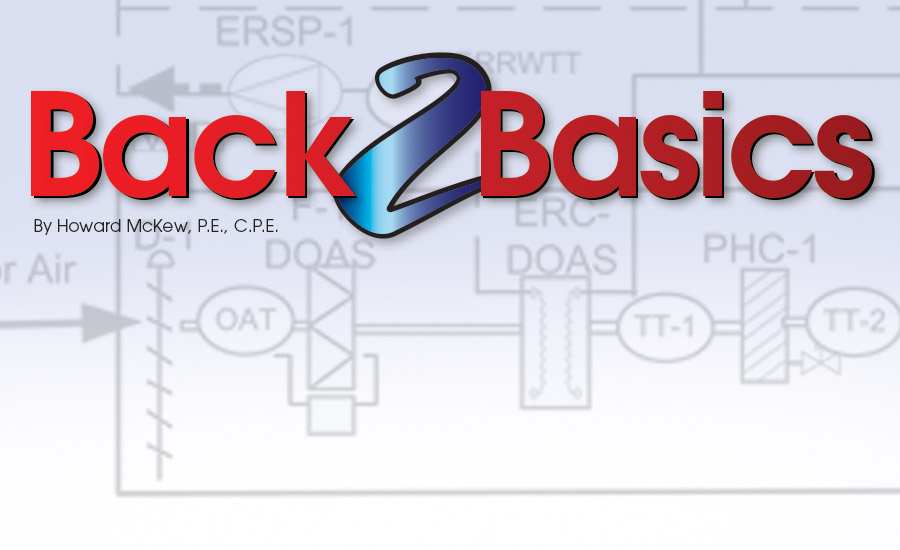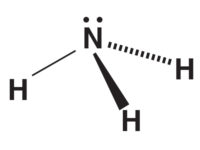This month’s B2B will focus an existing campus administration building renovation. The existing HVAC systems are perimeter baseboard radiation and the central AHUs that provide 100% outdoor air into the back of individual fan coil units (FCU). The renovation will retain the baseboard radiation but will remove and replace the FCUs with active chilled beams connected to the outdoor AHU. Each AHU has MERV 11 filters, an energy recovery wheel, preheat coil, and chilled water coil for dehumidification (systems are not part of this B2B test). Chiller plant and primary pumps are existing while the secondary, variable speed pumping shall be new.
The project delivery method shall be construction management (CM) beginning in the conceptual phase of the building program.
For this month’s application, the equipment selection shall be new chilled beams providing 2-pipe chilled water for sensible cooling within each office space of this campus administration building. Each individual room controlled chilled beam shall have secondary chilled water supply (SCHWS) to the beam(s) at 58˚F, with 63˚F secondary chilled water return (SCHWR) leaving the beam(s). The chilled water system shall be primary/secondary with variable flow blending primary CHWS with secondary CHWR to achieve the 58˚F SCHWS. The individual room sound levels will not exceed 35NC; space temperature shall be at 68˚F +/- 2˚F and 30% rh (heating season) and 74˚F +/- 2˚F and 60% maximum rh.
The design engineer is directed to 2015 ASHRAE Handbook – HVAC Applications, chapter 7 (Educational Facilities), chapters 36 through 43 (Building Operation and Management), and chapter 59 (HVAC Security) for design guidelines. In addition, the design engineer and the campus O&M staff should read 2016 ASHRAE Handbook — HVAC Systems and Equipment, chapter 5 (In-Room Terminals), chapter 6 (Radiant Heating and Cooling), and chapter 20 (Room Air Distribution Equipment) for information regarding active chilled beam design engineering.
Chilled beams shall be rated in accordance with ARI Standard 410, but their cooling capacities shall be established in accordance to ASHRAE Standard 200-2015 for the specific application on the inlet side of the chilled beam. No electrical power or direct control connections shall be required for the operation of the chilled beam.
Units shall be 48- by 24-in and 24- by 24-in based on contract drawings, shall be white with hinged linear bar induced air grilles, 4-way supply air blow, top outdoor dehumidified air inlet connection, and TAB ports. Each unit shall be independently suspended from the structure with four threaded rods.
The HVAC subcontractor shall:
-
Furnish and install each chilled beam above the acoustical ceiling grid and lower into the grid module by adjusting the nuts connecting the threaded rods to the beam.
-
Before connecting the supply water system to the beams, this subcontractor shall flush the piping system to assure that all debris and other matter has been removed.
-
Contractor shall furnish and connect beams to the SCHWS and SCHWR using wire braided, flexible hoses suitable for operation in an environment between -40˚ and 200˚F, rated for a least 300 PSI and tested for leakage at a minimum pressure of 360 PSI. Hose lengths shall not exceed 12 in.
The design team shall include the HVAC design engineer consultant with structural, architectural, plumbing, and electrical consultants. The college shall have an in-house project manager and shall retain a third-party commissioning and TAB consultant. The CM shall have a project manager, in-house estimating including mechanical and electrical estimators, and their own in-house registered professional engineer to assist in value engineering in the conceptual phase of the job.
The design team, along with the owner and the CM input, shall produce conceptual drawings, design development (DD) drawings and specifications, and contract documents (CD) in sync with the CM providing budget estimates in the conceptual phase and guaranteed maximum project cost between the DD and CD phases. The HVAC design engineer shall also complete a hydraulic model of the entire primary/secondary chilled water system (new and existing). The college facility manager and his O&M personnel shall review the documents throughout the design phase and receive introduction training of the new equipment. The O&M staff shall observe equipment startup, TAB, CM subcontractors’ punchlist, and the commissioning system demonstration.
The CM shall include the following during the shop drawing submittal phase:
- Equipment submittals - Pump and fan curves - Startup sheet - Troubleshooting sheets - O&M manuals, parts, and lubricants - ATC and energy management submittal.
A third-party commissioning and TAB (CxTAB) firm shall complete the following:
-
TAB system flow diagram of entire (new and existing) primary and secondary chilled water system with GPMs and pumps heads indicated at each piece of equipment.
-
TAB system flow diagram of entire supply and return water system, drawing upon data from the hydraulic model with GPMs and pressure drops at each piece of cooling equipment and at major branch runouts.
-
Commissioning functional performance test of the entire HVAC system (new and existing).
Refer to The Facility Files for additional information pertaining to completing the B2B test.




